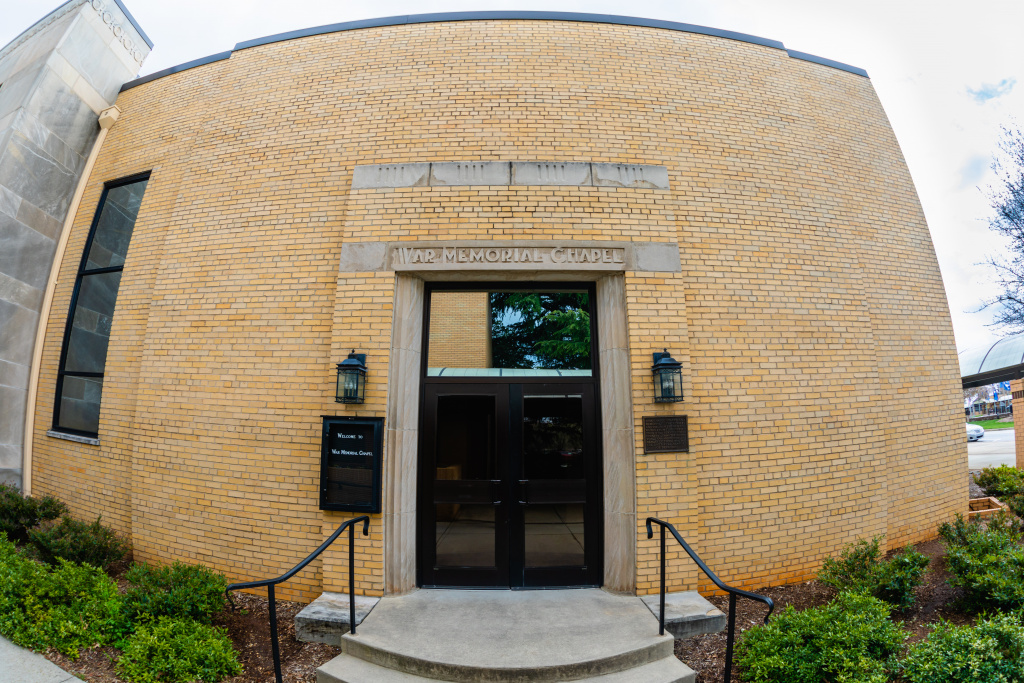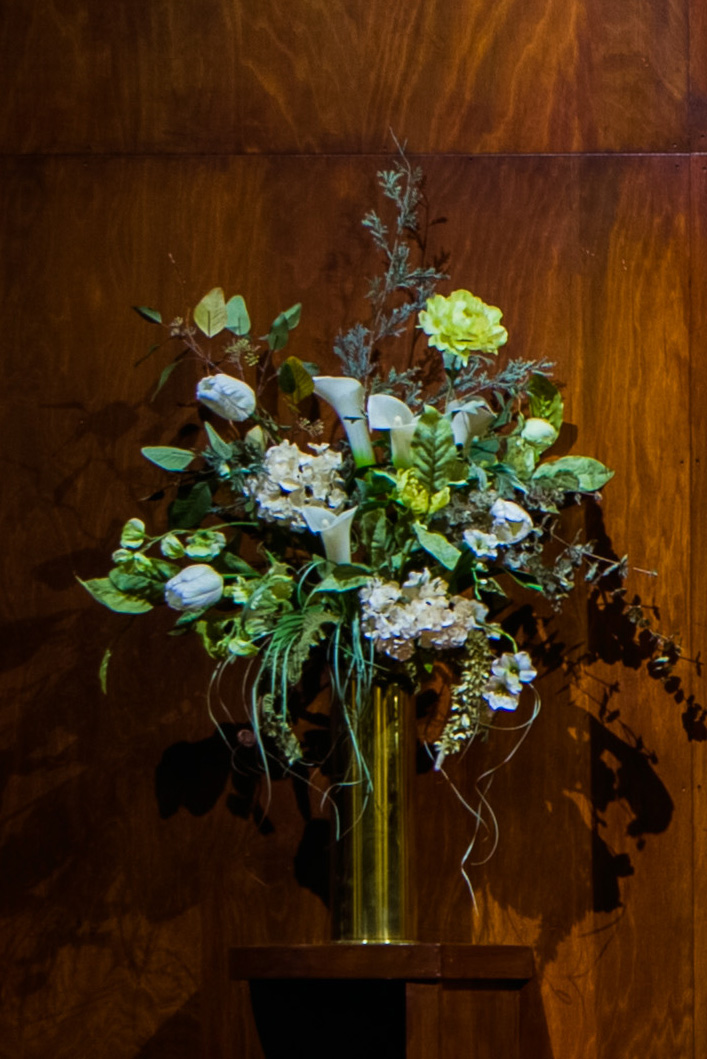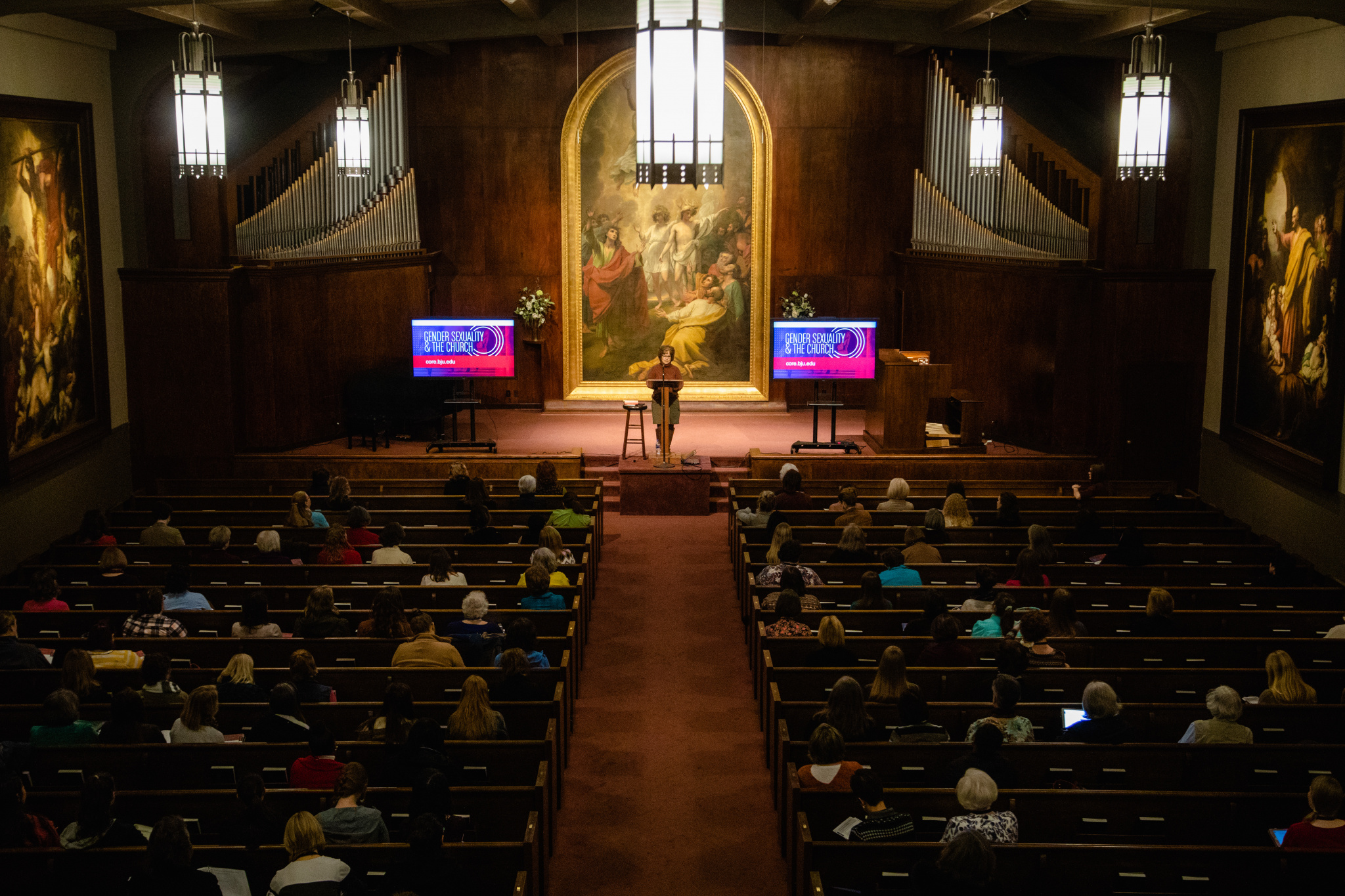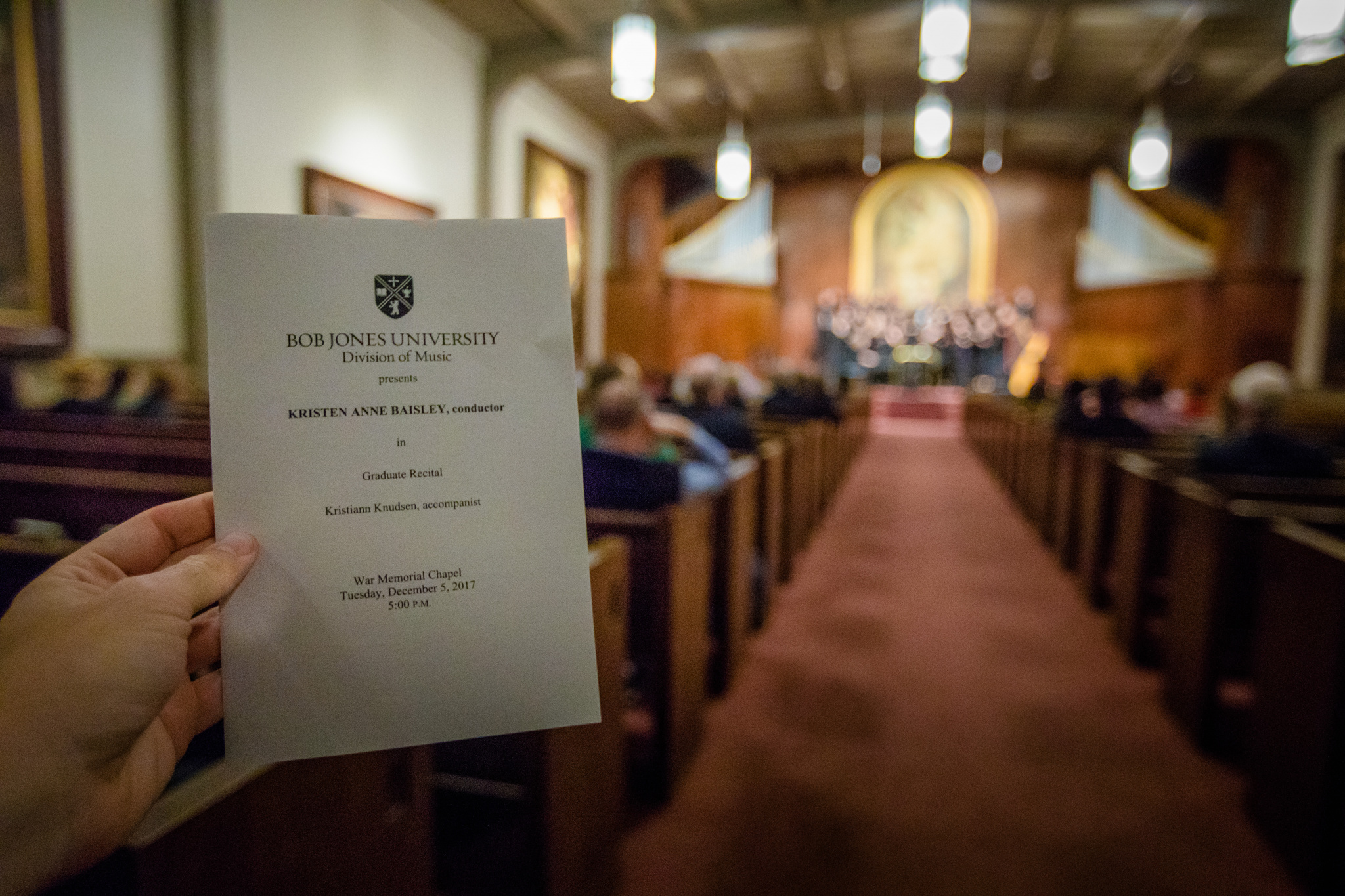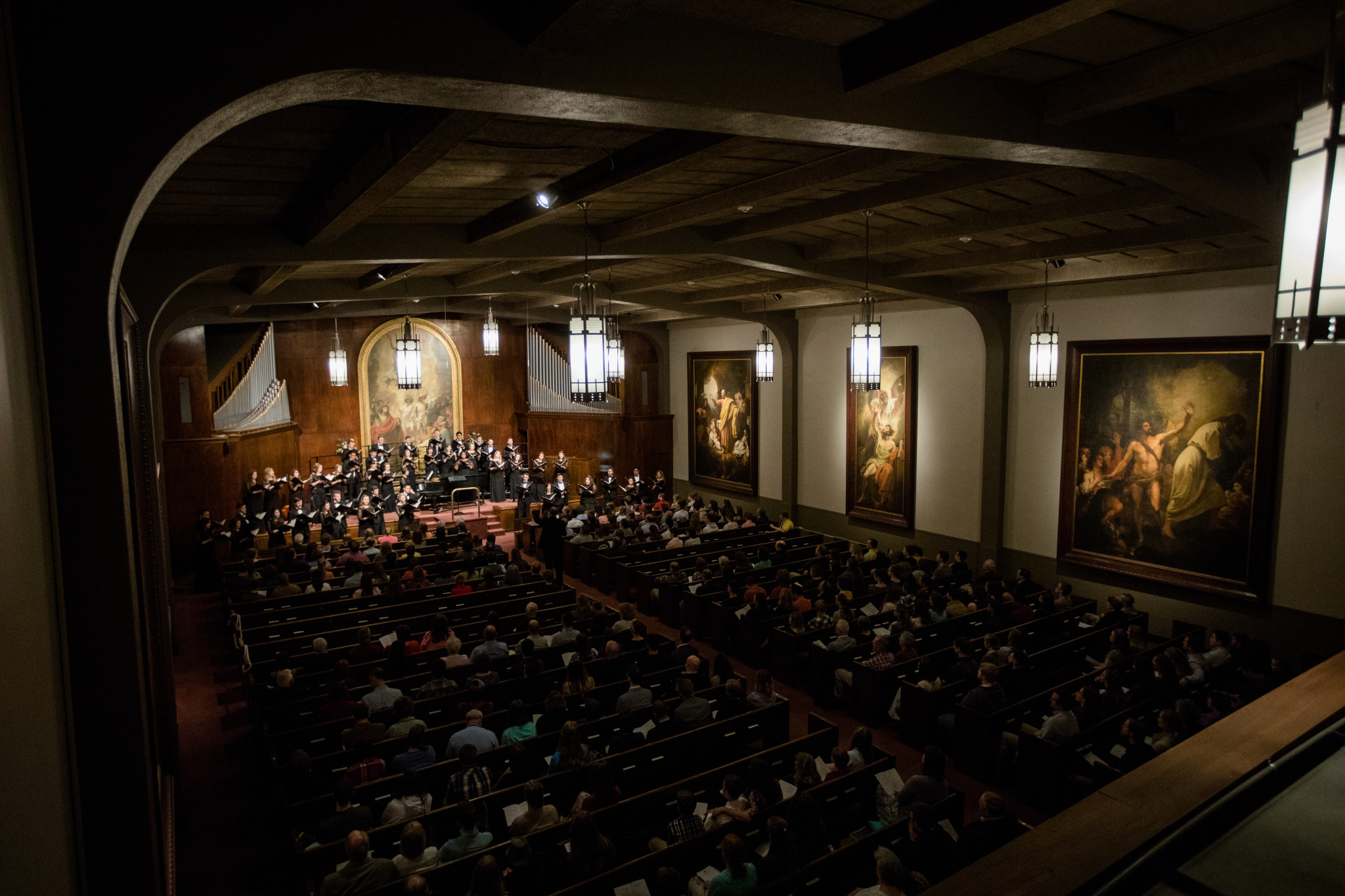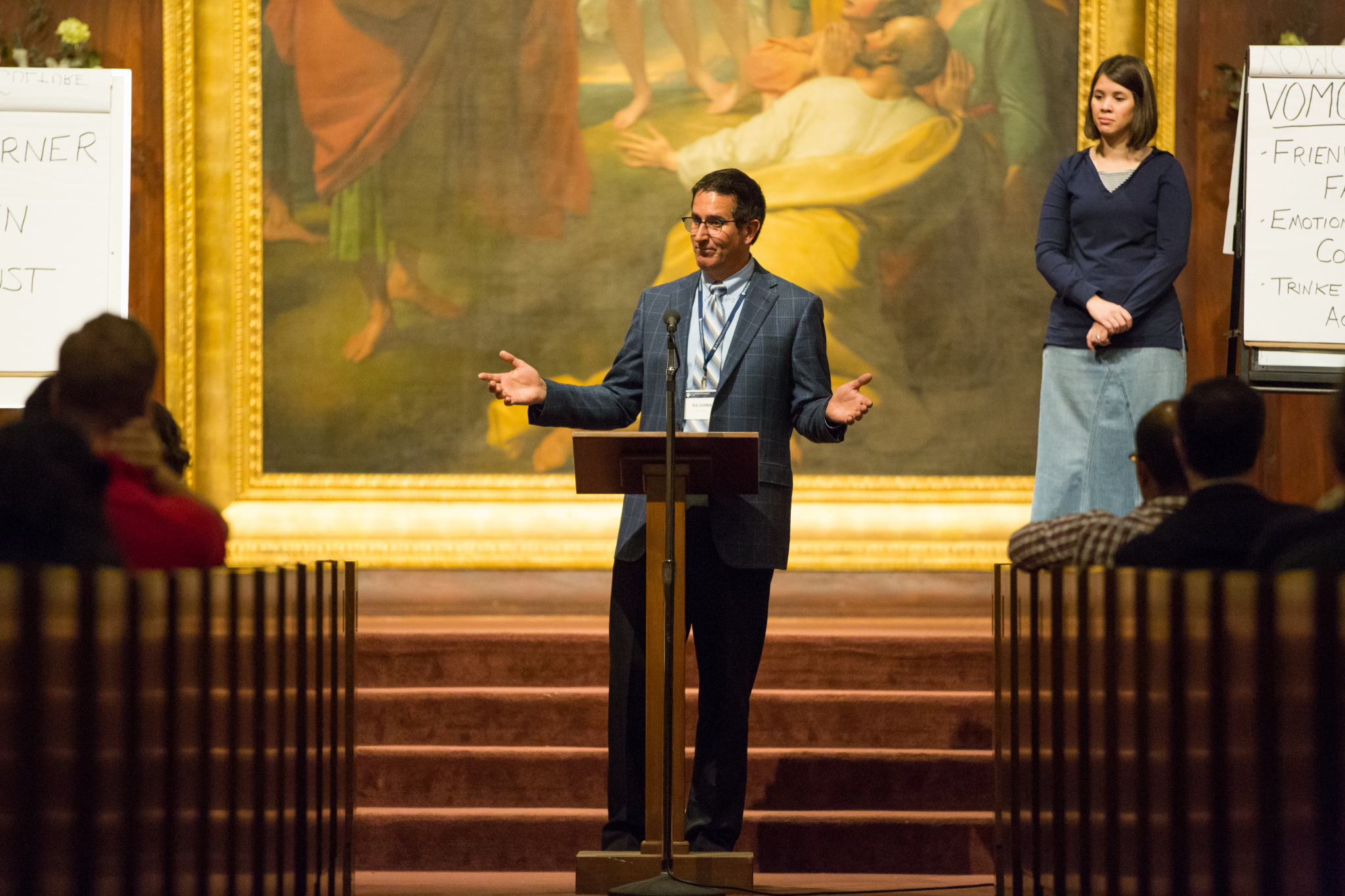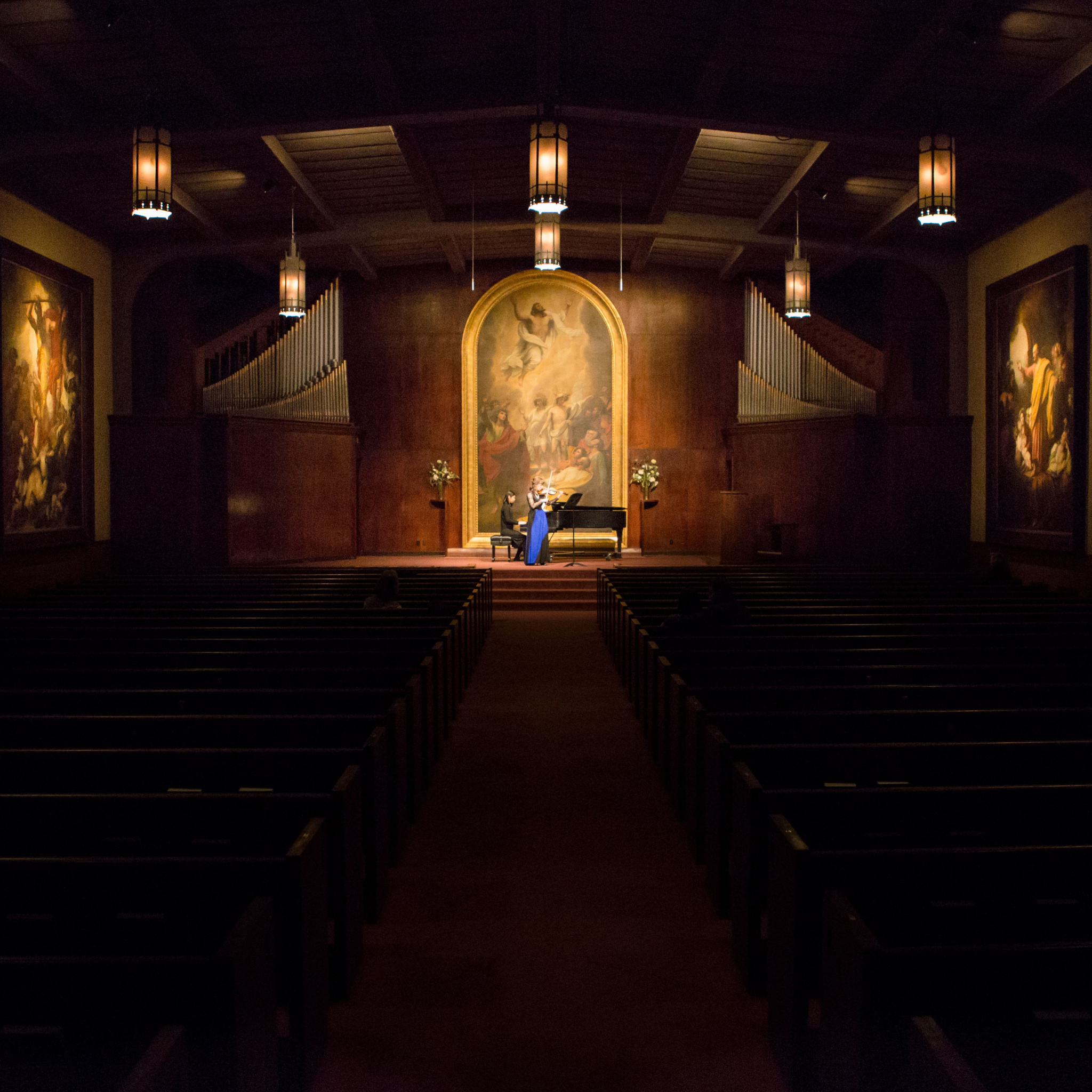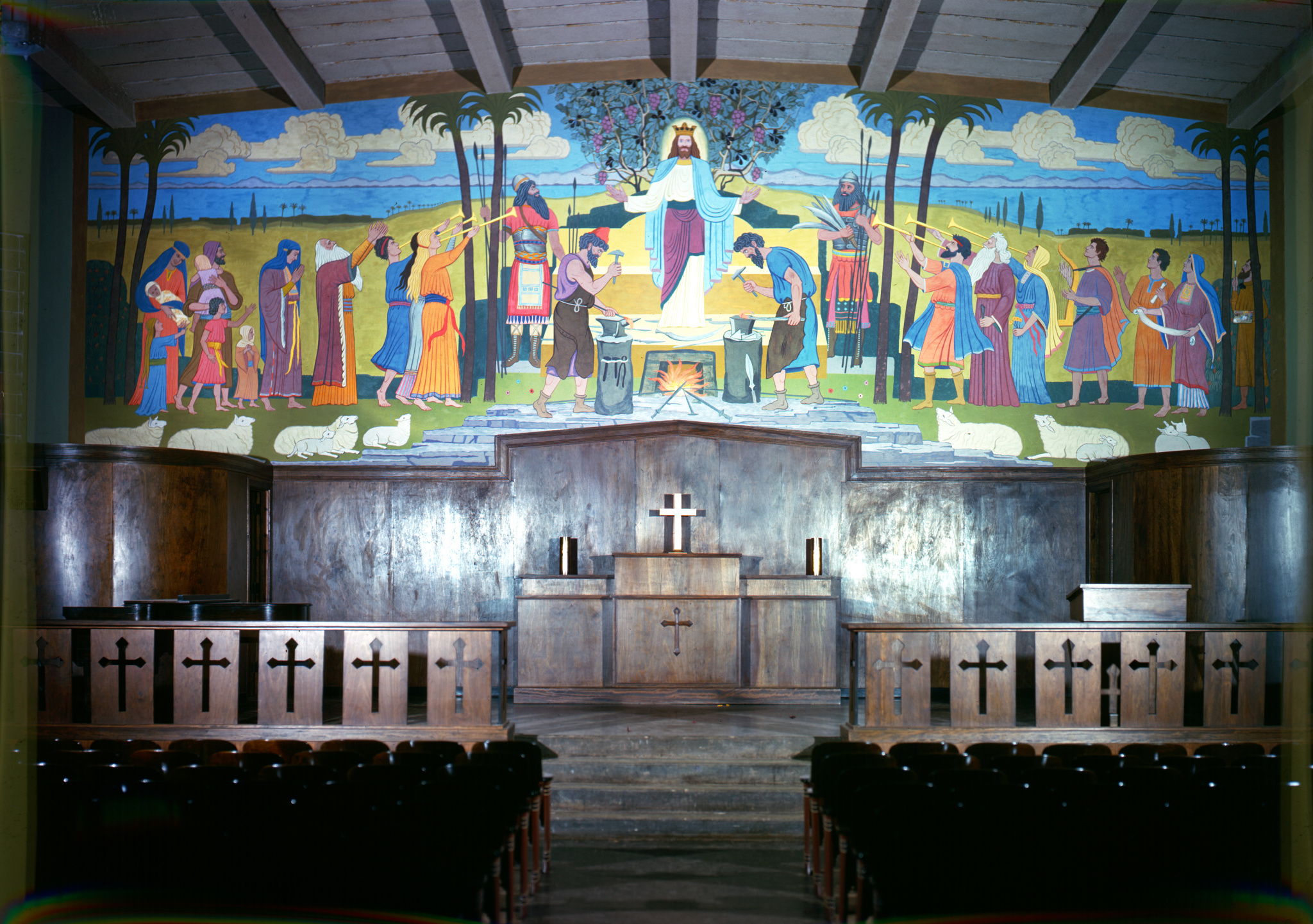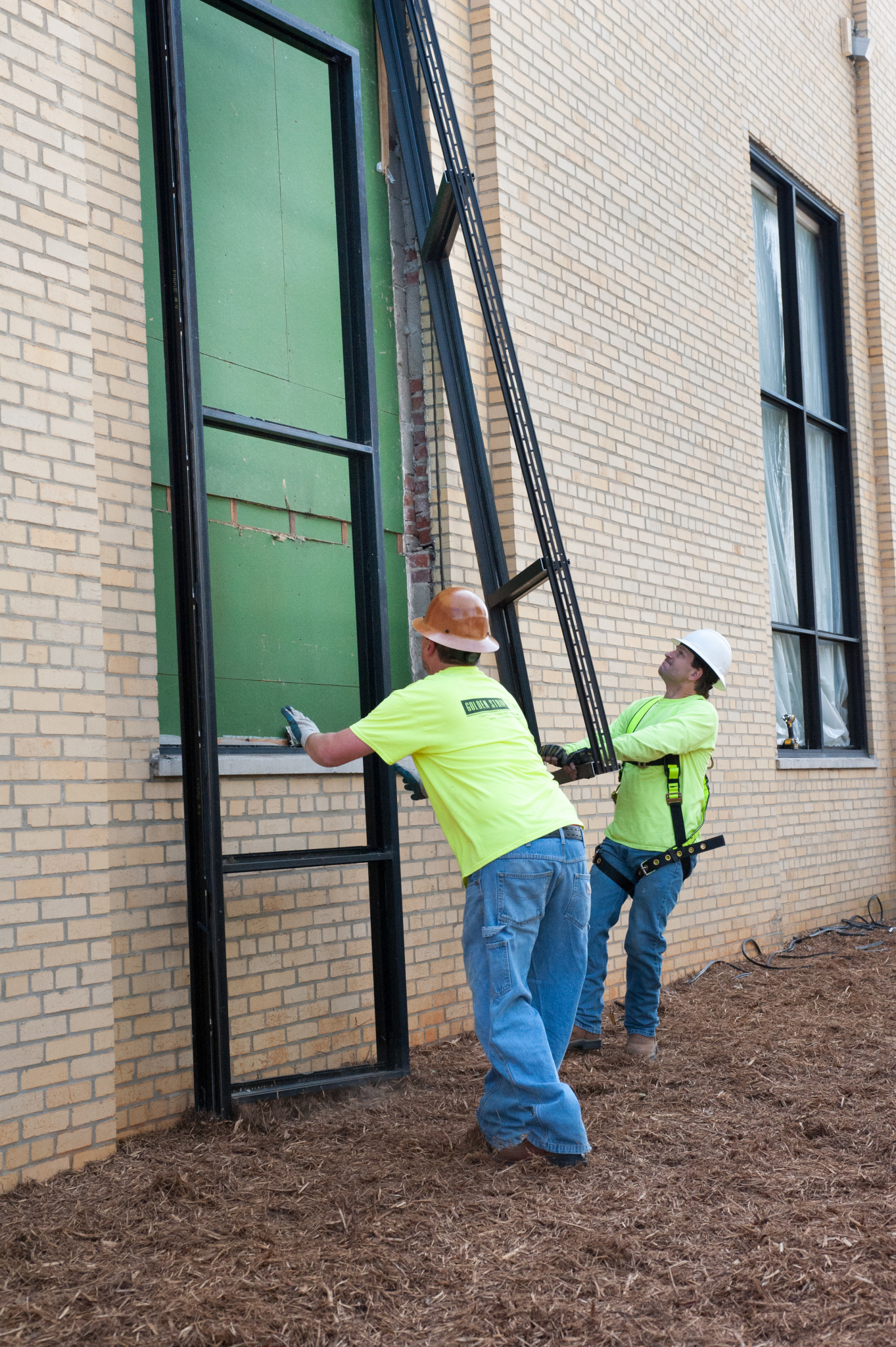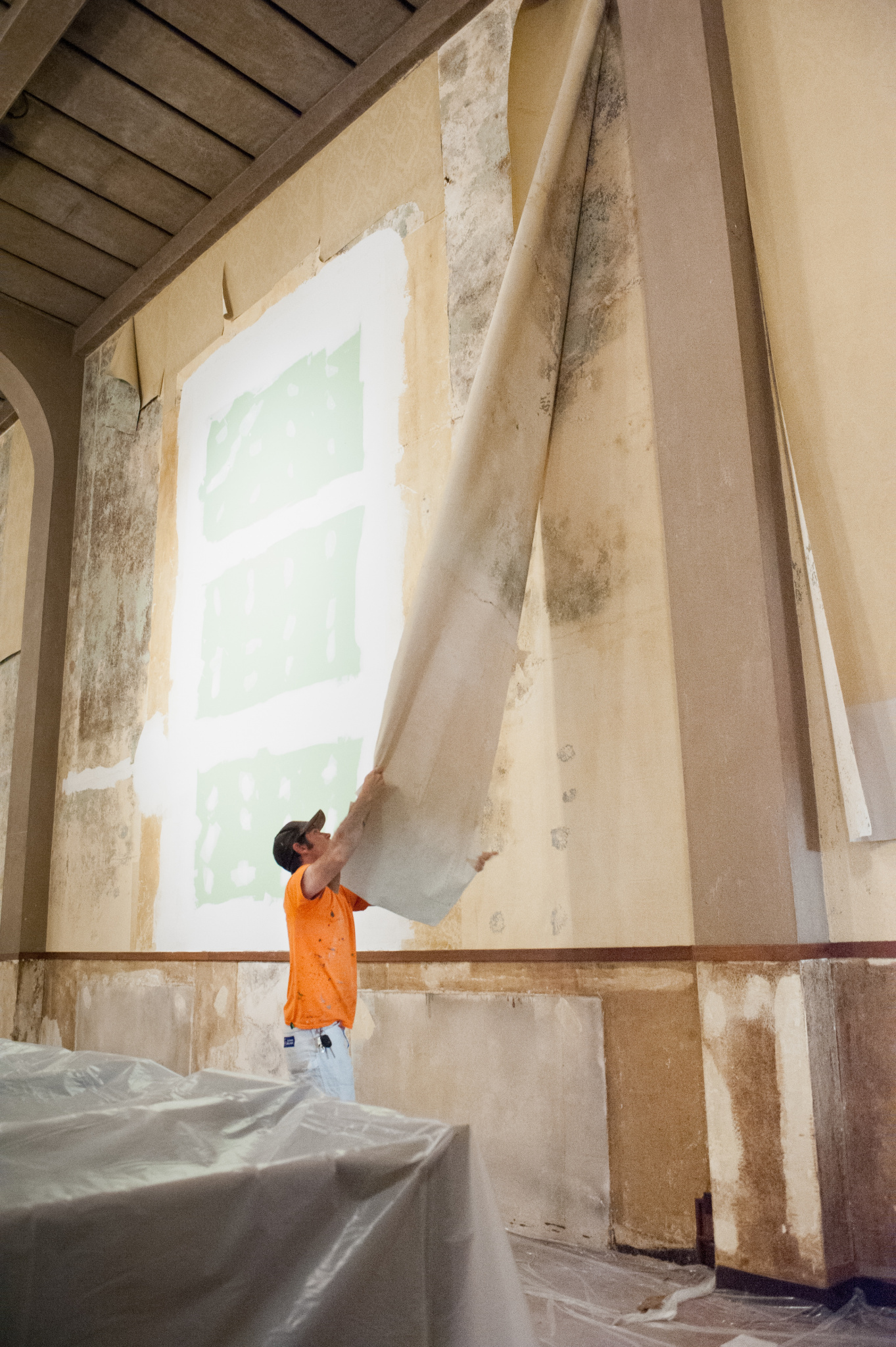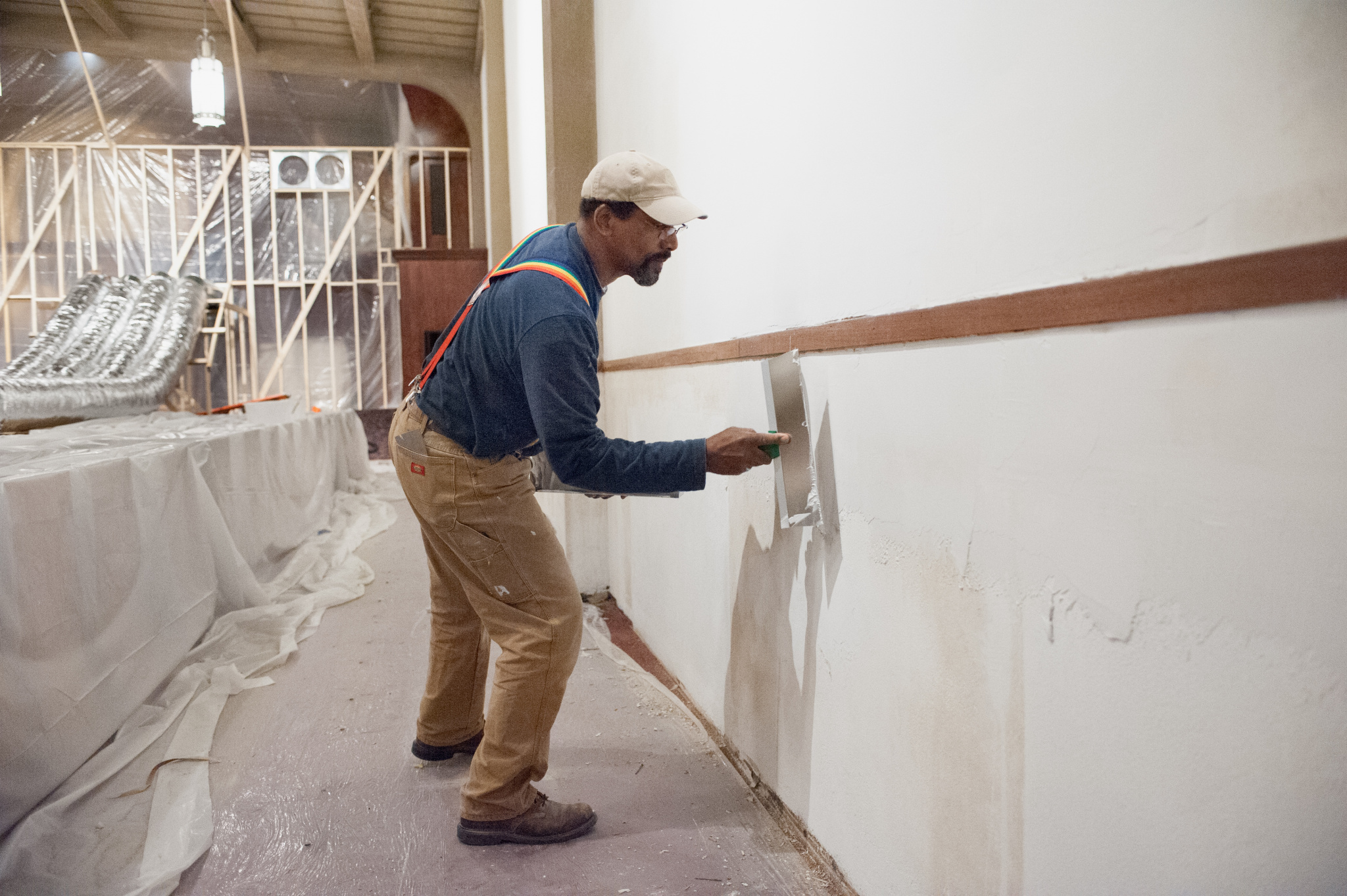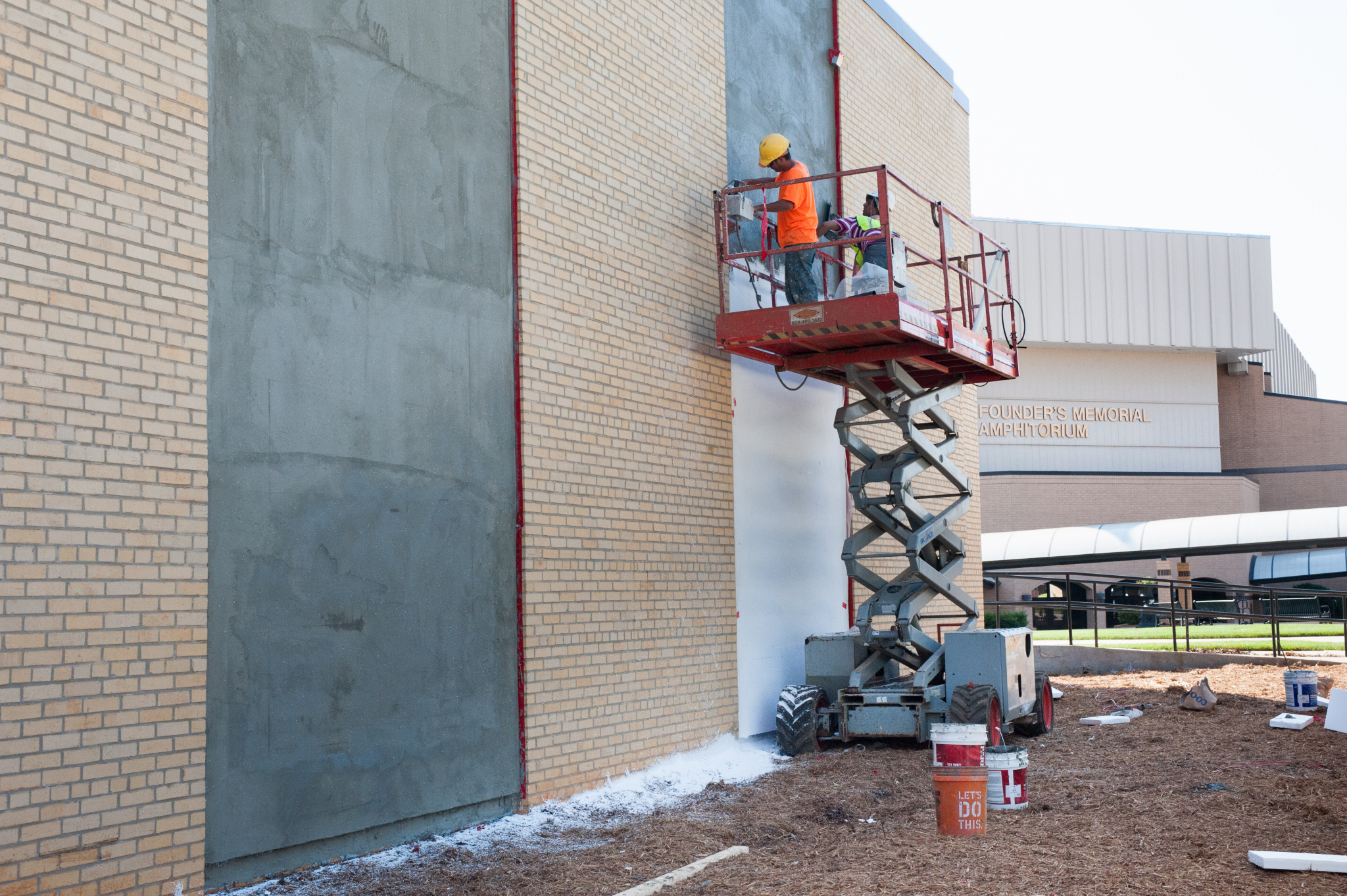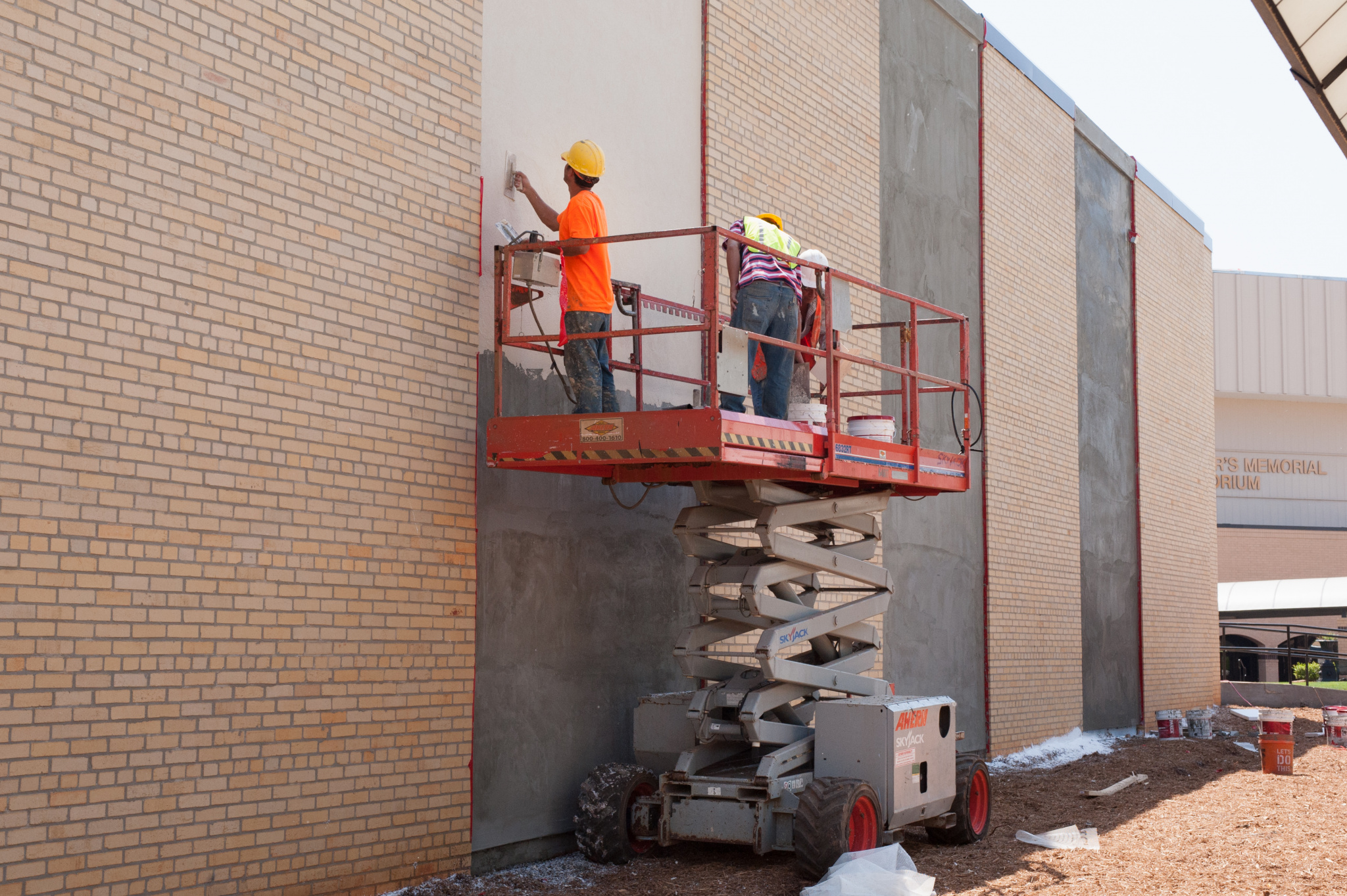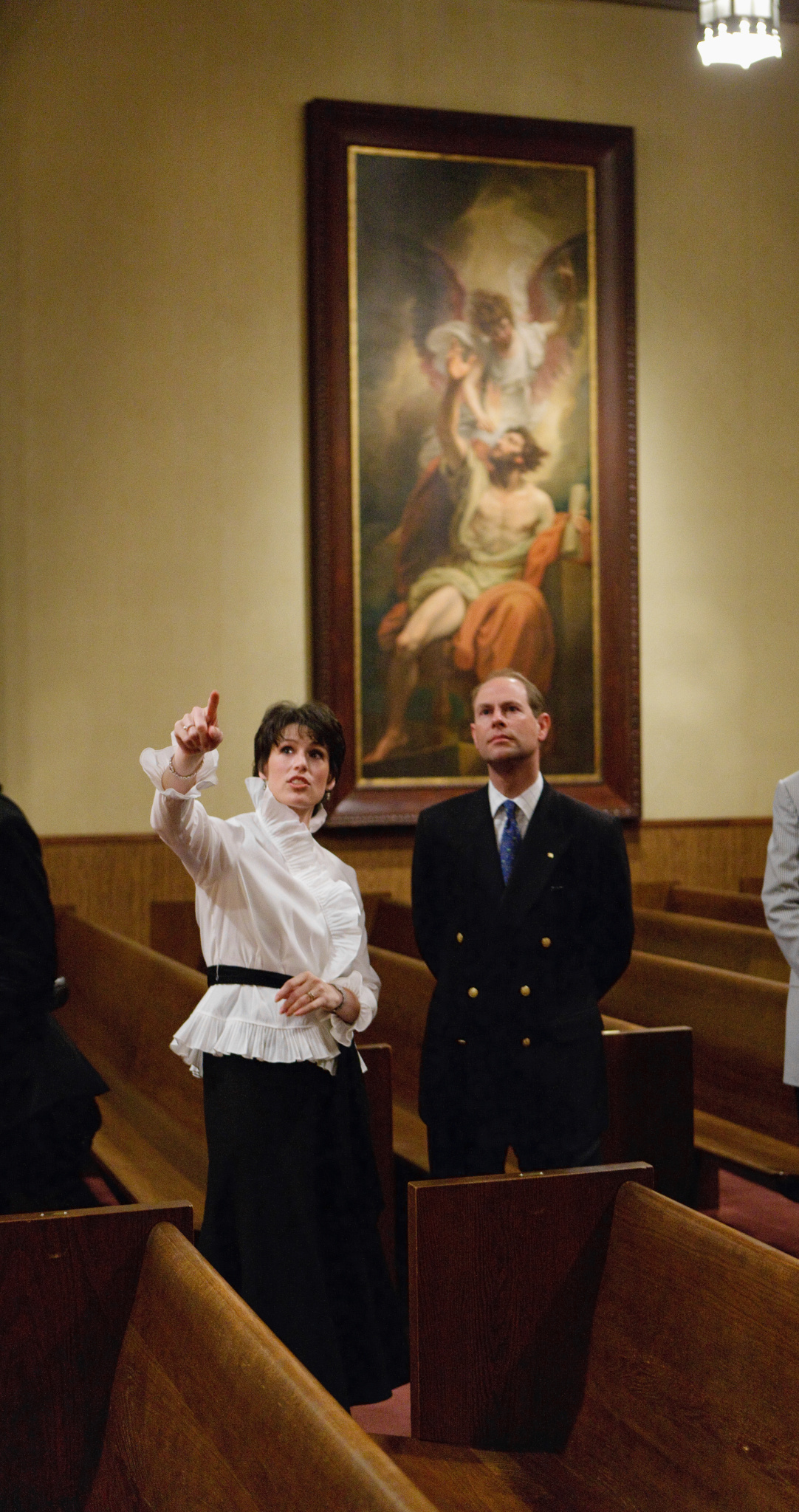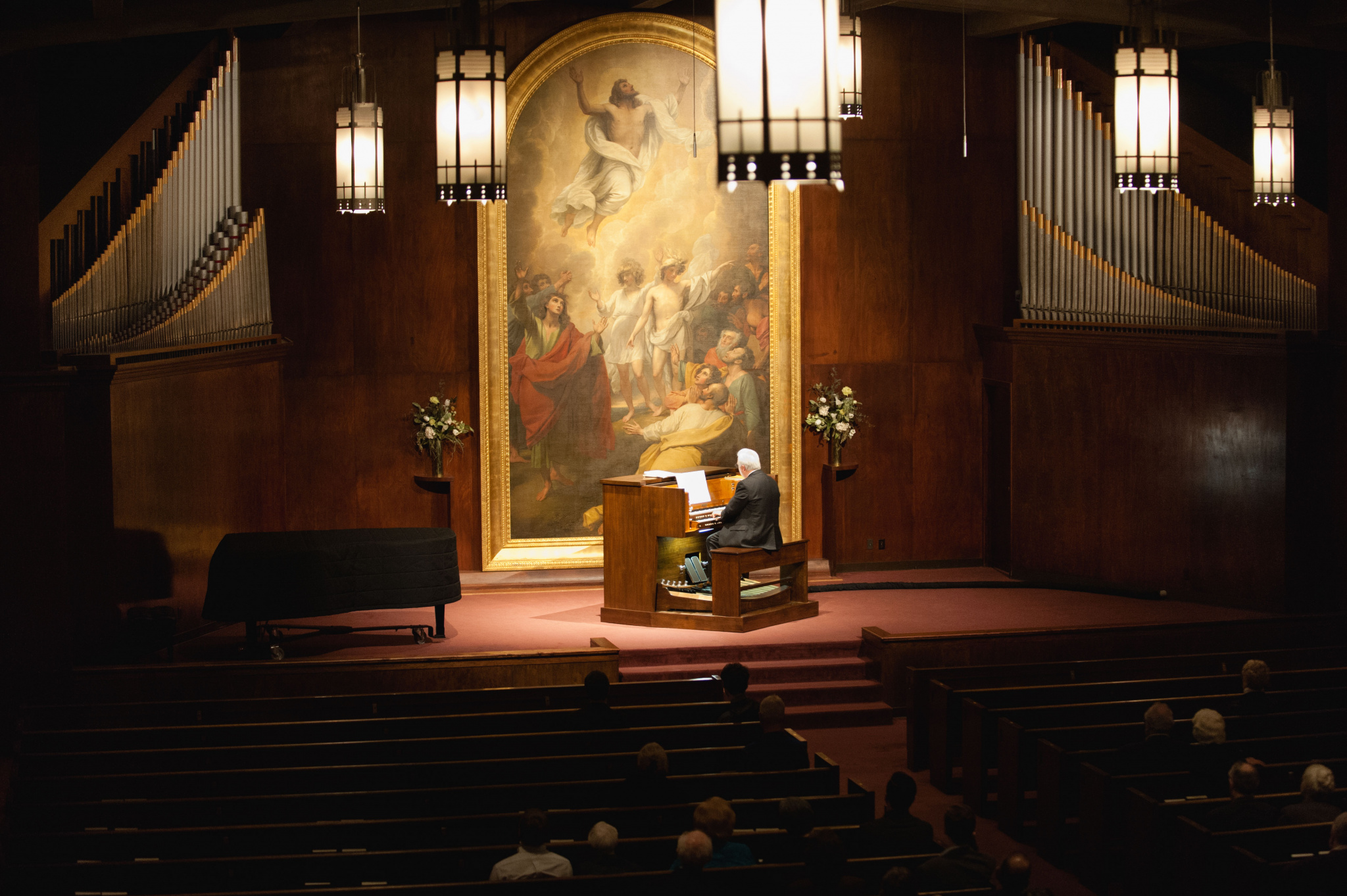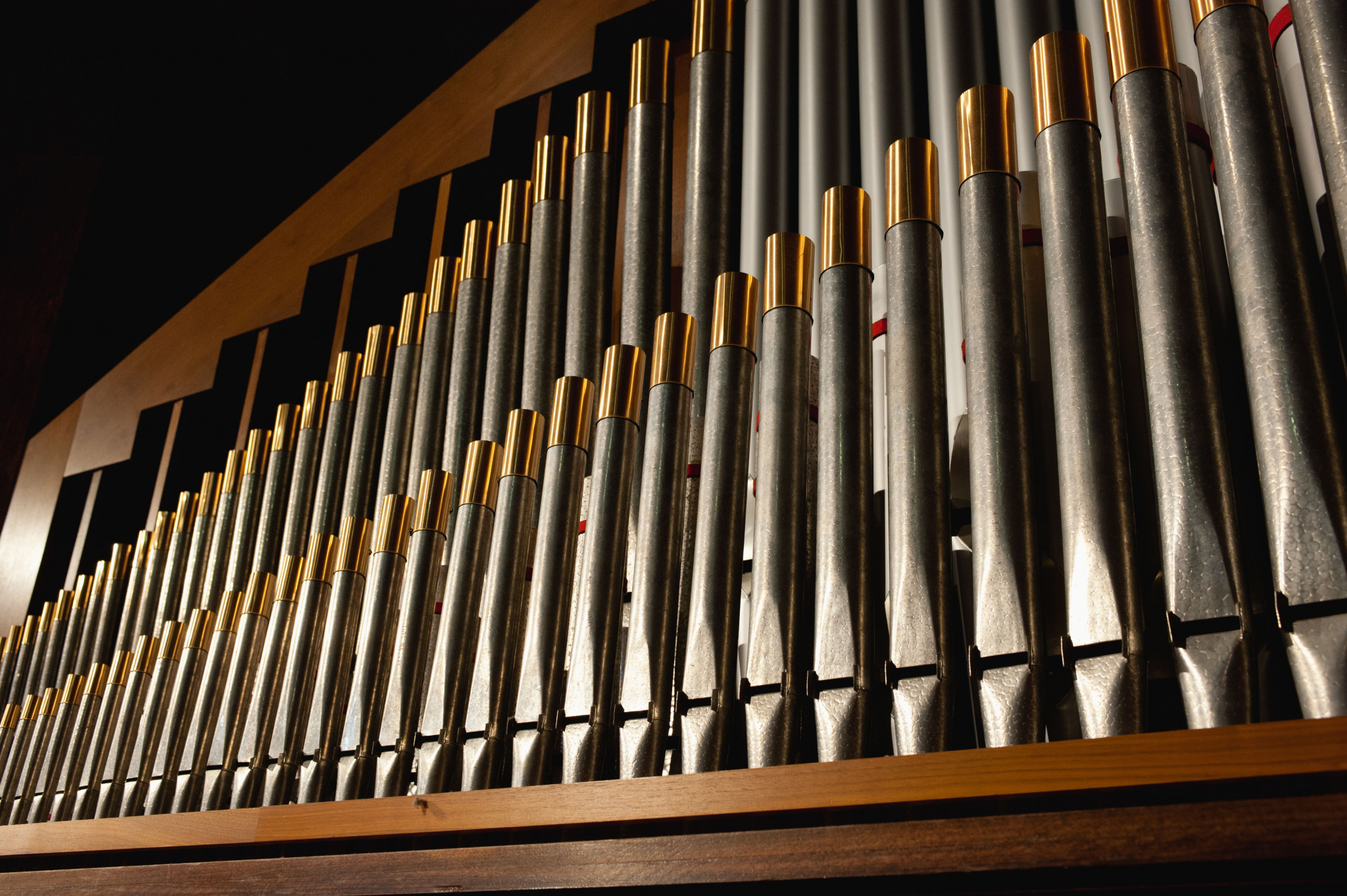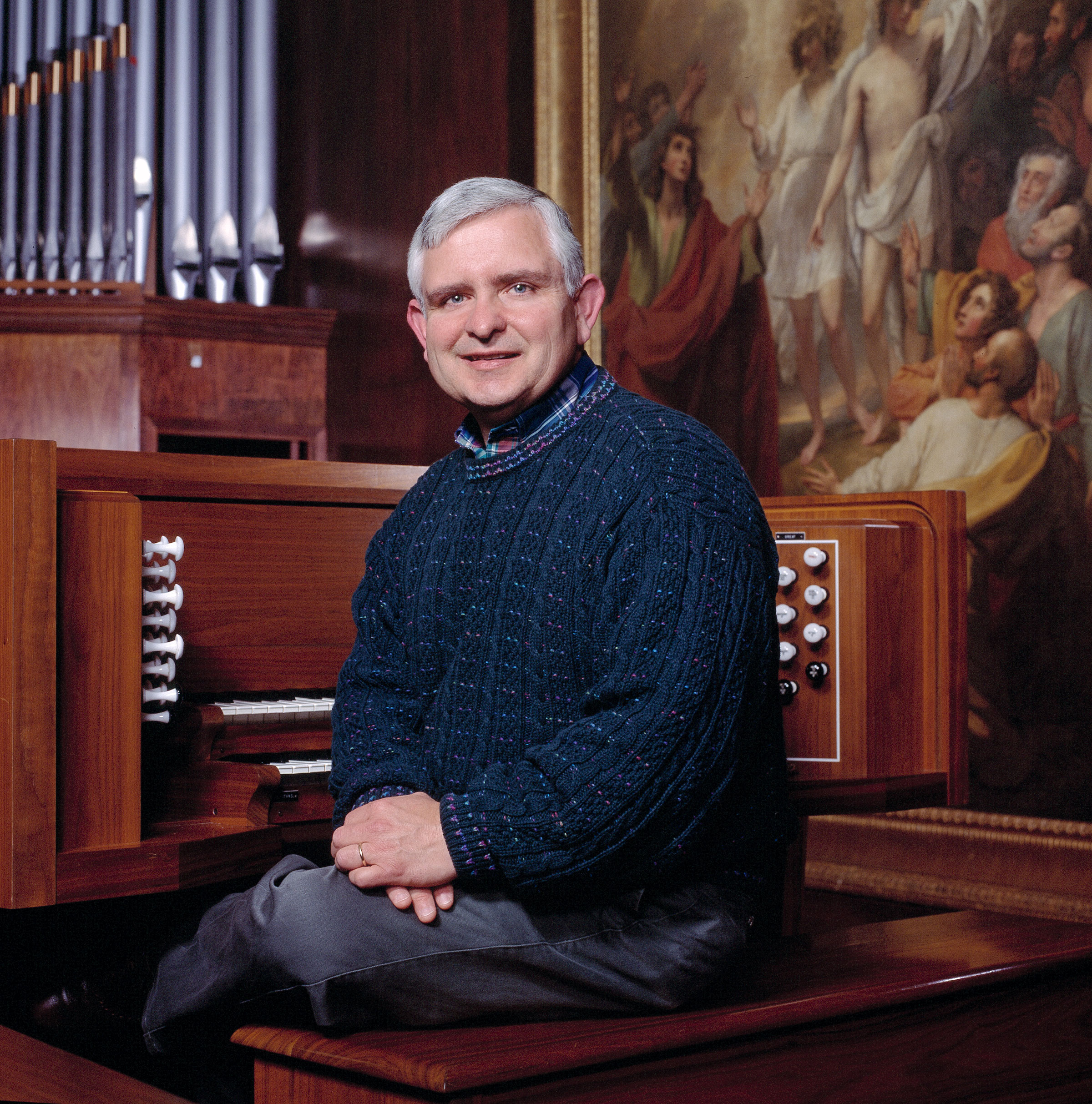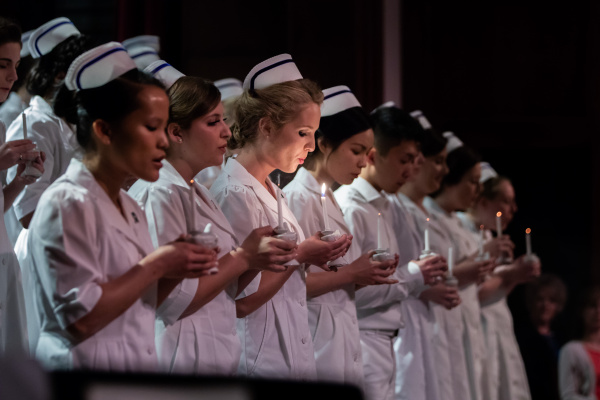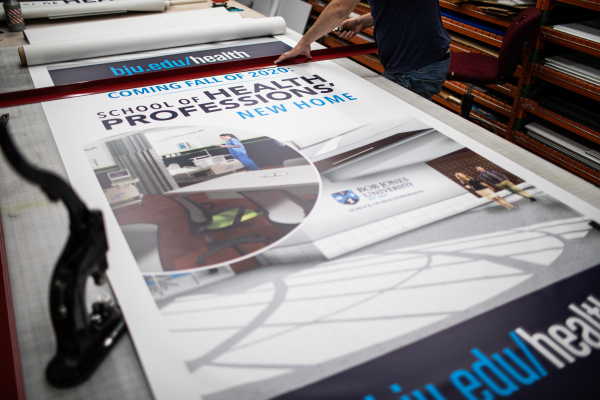A hub for recitals and concerts, War Memorial Chapel is a symbol of musical excellence to today’s students. However, although music is at the core of the University’s foundation, the chapel’s history tells of a much greater significance.
Significance of the Name
War Memorial Chapel is original to the Greenville campus, opened just two years after World War II came to an end. Remembering those who served and died in the war was a priority to the University and its student veterans. A plaque outside the entrance reads:
“This chapel stands as a memorial to the loyalty and valor of the men and women from this institution who served their country during the Second World War and honors the memory of those who paid the last full measure of devotion.”
Decor also reminds of the war. Two shell casings from 105mm howitzers—field artillery used during World War II—masquerade as flower vases at the front of the chapel.
Additionally, although unrelated to the war, plaques in the lobby memorialize long-time faculty and staff who have gone to meet their Savior.
A Change of Roles
Today, War Memorial Chapel primarily hosts recitals and concerts, but wedding ceremonies once flooded the venue. Until the ‘80s, wedding after wedding after wedding took place over Commencement weekend, allowing families to cut down on travel expenses.
Multiple generations have used the chapel for weddings over the years, even within the Jones family. Not only were Dr. and Mrs. Bob Jones III married in the chapel in 1959, but Dr. and Mrs. Stephen Jones were also married there in 1994.
The chapel hosted student meetings such as Mission Prayer Bands, faculty/staff meetings and musical events. Today, Bible Conference sessions and Center for Global Opportunities meetings take place there.
Funerals for prominent faculty members—such as Dr. Ron Horton—are also held in the chapel.
See Also: Dr. Ron Horton with the Lord
War Memorial Chapel Through the Years
Art has always been a significant feature of the chapel, and various works have taken turns decorating it over time. Other additions have also improved the chapel.
1949 – One of the little-known facts about the campus is that Lawrence Saint—a professional artist and father of martyr Nate Saint—painted a mural at the front of the chapel with two assistants. To reflect on the war and look forward to the millennial kingdom, he based the painting on Isaiah 2:4:
“And they shall beat their swords into plowshares and their spears into pruning hooks; neither shall they learn war anymore.”
To complement the mural, the chapel received a new coat of paint on the side walls, columns and beams. Refinished seats and floors completed the renovations.
Even less known, not only was there once a mural, but it is still there, hidden by the current wood paneling.
1953 – The senior class gave the University two stained-glass windows for the chapel. Virginia Spickard—a member of the art faculty—designed the windows to represent evangelism and missions.
1955 – In January, the University placed a carved walnut pulpit and a bronze plaque in the chapel. Both were in memory of Dr. Charles Brokenshire, former dean of the School of Religion—a man with “spiritual apprehension, … unexcelled scholarship, and … devotion and service to Christ, his Savior,” according to a BJU alumni newsletter.
1957 – The University hung five loaned tapestries in the chapel, courtesy of the art gallery French and Company in New York City. Three were from a series on King Hezekiah; one depicted Abraham and another King Ahab.
1960 – The University removed the seats in the chapel, replacing them with the current pews and adding a wall in the back to create a lobby. New wood paneling covered that wall and the wainscoting around the chapel.
1963 – The senior class gave the University the chapel’s most important addition yet—air conditioning.
2012 – After significant changes in the chapel (see Providential Prized Possessions), the long-standing rail and pulpits were removed to clear up the stage.
2016 – The University filled in the windows with concrete.
Providential Prized Possessions
Benjamin West Paintings
The primary attraction in War Memorial Chapel is The Progress of Revealed Revelation, a series of paintings by Benjamin West.
West was the first American artist to study in Italy. He was also the official painter to King George III and the president of the Royal Academy of Art.
George III intended for the series to decorate a chapel at Windsor Castle, but the chapel was never built. Neither was the series completed. Although West planned 35 paintings for the series, he only completed 18. Of those, 12 still exist, and the chapel holds seven.
The Progress of Revealed Revelation depicts servants of God throughout dispensations. West represented the Antediluvian, Patriarchal, Mosaical, Gospel and Revelation dispensations. The collection includes works such as Isaiah’s Lips Anointed with Fire, St. Peter Preaching at Pentecost and The Ascension.
Acquiring seven of these priceless paintings was an incredible act of God. Julius Weitzner—an art dealer and close friend of Dr. Bob Jones Jr. who assisted in purchasing more than half of the University’s art collection—bought six from an auction in London. In 1963 an anonymous donor gifted the works to the Collection through Weitzner. Harry and Oscar Dwoskin—owners of the firm that remodeled the chapel walls to accommodate the paintings—gave the University the seventh painting, Esau and Jacob Presented to Isaac.
Once the six paintings from England arrived in Greenville, they were taken to what is now the dining common kitchen to be cleaned and conserved. Bartolo Bracaglia came from New York to work on them.
Then stage manager Mel Stratton designed frames for the paintings and built them inside the chapel (giant paintings in even bigger frames do not tend to fit through doors). The paintings—which art historian Dr. Alfred Scharf wrote to Bob Jones Jr. “probably (formed) the most outstanding series of religious paintings in XVIII century England”—finally hung in their new home, on display in America for the first time.
It is as if the paintings were always meant for War Memorial Chapel. John Nolan, former curator of the Museum & Gallery and member of the art faculty, tells his appreciation of art class, “One of the most amazing things about this whole story has to do with the space that these paintings are in now—they were intended for a chapel that was never built, but now they are in one.” In fact, the chapel is almost the same size as was intended for the one at Windsor Castle, a detail that testifies to God’s providential working.
Since September 1, 1963, many have had the chance to see these great works of art, including His Royal Highness Prince Edward, Earl of Wessex and third son of Queen Elizabeth II of the United Kingdom. In May 2010, Prince Edward, while on official business in the Greenville area, viewed the West paintings during a private tour of the Museum & Gallery. Although the Royal Collection does boast paintings by West, none from The Progress of Revealed Revelation series is included.
M&G includes two other works by West—a preparatory drawing of Esau and Jacob Presented to Isaac and another modello of the lost Moses Ordaining Aaron and His Sons to the Priesthood. Since 2018 these paintings hang on the back wall of the chapel while M&G is closed.
The Organ Transplant
The chapel’s first organ was electronic, but a pipe organ replaced it in 1958. Ten years later the pipe organ was replaced by the electronic organ previously used in Rodeheaver Auditorium. However, because pipe organs are better than electronic, it was ideal for the chapel to have a pipe organ again.
After praying for an affordable pipe organ for the chapel, Dr. Ed Dunbar—then chair of the Division of Music and head of the organ department—discovered a used 17-rank Wicks organ in October 1987. During a building project, a church in Arizona had not left enough space for their organ’s pipe chambers. But the organ—too big for the church—was almost the perfect size for War Memorial Chapel.
With help from Dr. Jean Saito of University Medical Associates and her brother—donors who agreed that their funds could be used for the organ in memory of their parents—the University could pay for this half-priced instrument.
After bidding for the organ in December 1987, the University began what Dunbar referred to as the “organ transplant.” Retrieved in January, the organ spent time in Atlanta to be modified specifically for the chapel. The pipes went from being in one case to two so that they could be divided on each side of the chapel. Two ranks—or sets of pipes—were added in the process, one rank specifically to visually balance the two sides of the new installation.
Workmen renovated the chapel front and installed the organ during the summer of 1988. Dunbar performed the dedicatory recital in January 1989.
Dunbar wrote, “This new organ will be here for many years to come; and, if the Lord tarries, hundreds of students will be able to benefit from it. The instrument fits beautifully into the Chapel and sounds as if it had been originally built for that room. Of course, it had been; the Lord just allowed it to spend the first six years of its life in a church in Arizona.”
The organ underwent modifications in 2013. Five knobs added to the console on the organ give several ranks the ability to act as different ranks. This change allows more pitches to be played without adding pipes.
The origin, the art and the music of War Memorial Chapel—along with every other detail of its history—have told of God’s abiding grace, both through their messages and because of His provision.


